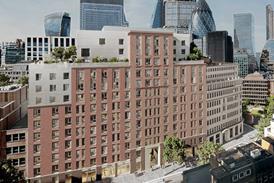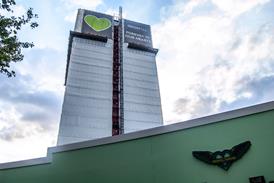- Home
 Government should have targets for amount of British-made steel used in public jobs, Mace chairman says
Government should have targets for amount of British-made steel used in public jobs, Mace chairman says Birmingham defers decision on Simpson Haugh’s five-tower scheme amid tall building fears
Birmingham defers decision on Simpson Haugh’s five-tower scheme amid tall building fears Green light for Morris & Co’s plans to turn Aldgate office into resi
Green light for Morris & Co’s plans to turn Aldgate office into resi Grenfell refurbishment companies sued for more than £360m by council
Grenfell refurbishment companies sued for more than £360m by council
- Intelligence for Architects
- Subscribe
- Jobs
- Events

2025 events calendar Explore now 
Keep up to date
Find out more
- Programmes
- CPD
- More from navigation items
A crisis hiding in plain sight: how the UK’s built environment is failing children and young people

While housing supply and affordability dominate public debate, the lack of safe, accessible spaces for children and adolescents is a critical yet overlooked issue. Nora Redmond takes a closer look at why the built environment has left young people so underserved
The covid-19 pandemic revealed a troubling truth about the UK’s built environment: it is failing the youngest in society. While public discourse often focuses on housing supply and affordability, less attention is given to how new developments cater to children and adolescents. The lack of access to safe, recreational spaces – crucial for mental and physical well-being – remains a major oversight within many developments.
Only 6% of new homes in the UK are designed by architects, according to the RIBA, a fact that the institute believes is reflected in the poor design of many developments, which often fail to provide access to green space and areas for play. Research suggests that these shortcomings disproportionately affect young people, particularly in lower-income areas, and highlight the urgent need for solutions. This growing realisation has led to the creation of a recent parliamentary inquiry.
…
This is premium content.
Only logged in subscribers have access to it.
Login or SUBSCRIBE to view this story

Existing subscriber? LOGIN
A subscription to Building Design will provide:
- Unlimited architecture news from around the UK
- Reviews of the latest buildings from all corners of the world
- Full access to all our online archives
- PLUS you will receive a digital copy of WA100 worth over £45.
Subscribe now for unlimited access.
Alternatively REGISTER for free access on selected stories and sign up for email alerts


